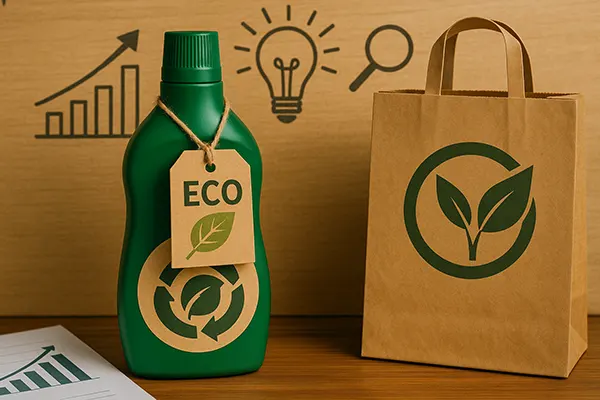
Greenwashing in Marketing: How Companies Manipulate “Eco” Messages
As environmental awareness becomes a global priority, many consumers seek to support businesses that align with sustainable values. However, not all eco-claims are genuine. This practice, commonly known as greenwashing, allows companies to falsely present themselves as environmentally responsible in order to appeal to conscious consumers.
Understanding Greenwashing and Its Implications
Greenwashing refers to marketing tactics used to make a business or product appear more environmentally friendly than it actually is. This can include vague or misleading labels, exaggerated claims, and unsubstantiated certifications. The goal is often to improve a brand’s image and capitalise on the growing demand for sustainability.
Such practices not only mislead consumers but also damage trust in the green movement as a whole. When brands claim to be sustainable without meaningful action, they create confusion and dilute the value of truly eco-friendly initiatives.
Greenwashing also undermines legitimate environmental efforts by creating an illusion of progress where little or none exists. This delays the adoption of real, impactful changes across industries and shifts focus from genuine innovation to cosmetic image-building.
Real Examples of Greenwashing in Practice
Numerous global brands have faced criticism for greenwashing. For instance, in 2022, a major fast-fashion retailer launched a “conscious” collection that was marketed as sustainable. However, an investigation found that the materials used were not significantly different from the rest of their inventory, and the overall environmental impact of their business model remained unchanged.
Another example involves a major airline promoting its carbon offset programme, suggesting passengers could fly guilt-free. Critics pointed out that offsets do not cancel emissions entirely and often rely on projects that are difficult to verify or are already under way.
These cases demonstrate that greenwashing is not limited to a specific industry. It spans fashion, travel, food, and even tech, showing how widespread the issue has become in recent years.
The Role and Limitations of Environmental Certifications
One way companies try to build credibility is by showcasing eco-labels or certifications. These symbols often suggest compliance with environmental standards. However, the presence of a label doesn’t always guarantee legitimacy. Some certifications are created or funded by the companies themselves, leading to conflicts of interest.
Even established labels such as FSC (Forest Stewardship Council) or USDA Organic face scrutiny. While these certifications involve assessments, critics argue that loopholes, inconsistent enforcement, and varying regional standards make it easier for some brands to bypass strict scrutiny.
Moreover, the lack of a global standard for environmental claims allows companies to cherry-pick certifications that align best with their marketing goals, rather than reflect real sustainability progress.
How to Identify Trustworthy Eco-Labels
Consumers can reduce their exposure to greenwashing by learning to identify credible eco-labels. Third-party verified certifications that follow transparent standards are more trustworthy. Examples include EU Ecolabel, Blue Angel, and the Energy Star programme.
It is essential to look beyond the label itself and examine the criteria behind the certification. Does it measure real impact? Is it updated regularly? Is there accountability when standards are not met?
Additionally, consumers should be cautious with vague claims like “eco-friendly” or “natural,” especially when not supported by data or clear definitions. These terms are often unregulated and can be used freely by marketers.

Empowering Consumers to Detect Greenwashing
As greenwashing becomes more sophisticated, consumers need tools to evaluate sustainability claims critically. One effective method is to assess transparency. Companies genuinely committed to sustainability usually provide detailed reports, outline measurable goals, and are open about their progress and challenges.
Another approach is to review the entire lifecycle of a product. Is it made using renewable resources? Are the workers treated fairly? Is the packaging recyclable? Focusing on a product’s full footprint helps consumers distinguish between real change and surface-level efforts.
Engaged consumers can also use watchdog websites, social media groups, and sustainability rating platforms to verify claims. The more people question and share credible information, the harder it becomes for companies to mislead the public.
What Companies Should Do Instead
Instead of relying on misleading marketing, companies should prioritise genuine sustainability. This includes investing in cleaner technologies, reducing waste, improving supply chain ethics, and regularly publishing transparent environmental impact reports.
Businesses that commit to long-term goals and acknowledge the complexity of sustainability build deeper trust with consumers. Mistakes and setbacks are understandable if companies show they are learning and improving.
Ultimately, genuine change involves collaboration, innovation, and accountability. Companies must move beyond branding and take responsibility for their environmental impact at every stage of operation.
Similar news
-
 Brand Strategy in Times of Change: Building Lon...
Brand Strategy in Times of Change: Building Lon...Organisations entering 2025 face markets shaped by rapid technological shifts, …
-
 Grey Marketing 2.0: How Grey and Black-Hat SEO ...
Grey Marketing 2.0: How Grey and Black-Hat SEO ...As artificial intelligence and machine learning dominate digital marketing, traditional …
-
 Emotional Manipulation in Advertising: How Cris...
Emotional Manipulation in Advertising: How Cris...In times of global instability, emotions become powerful tools for …
